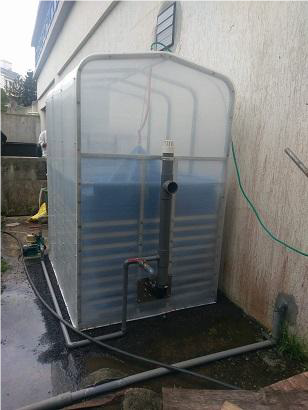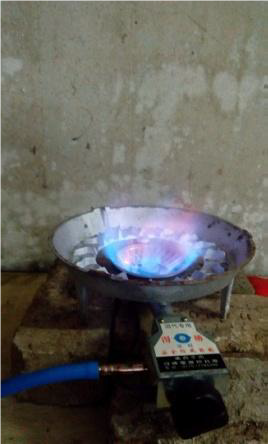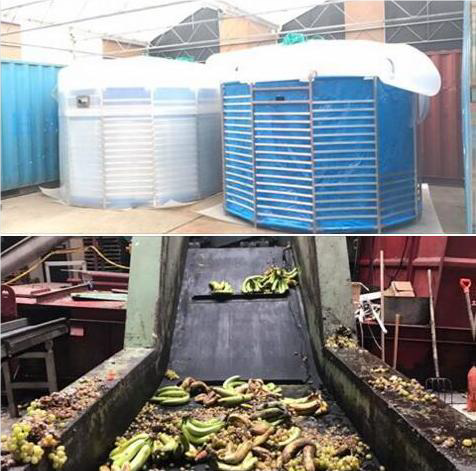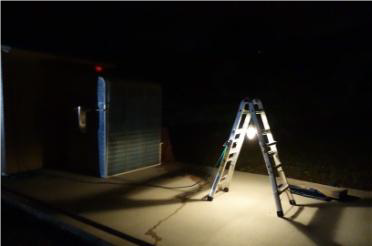AVIPE – EMBRACE European Med-clusters Boosting Remunerative Agro-Wine Circular Economy
COMPANY SUMMARY
AVIPE’s main activity is viticulture consultancy. It supports around 4000Ha of 250 farmers in the Peninsula de Setúbal – Portugal, and its main activities are related to integrated pest management, irrigation, fertilization, vineyard training and the implementation of investment projects. AVIPE was founded in 1984 but it wasn’t until 1998 that it began to have a closer relationship with farmers. From then until now, several changes have been made to the way we offer our technical support:
The current challenges are:
- managing viruses and wood diseases, rather than mildew and powdery mildew,
- using satellite images and remote data instead of random observation,
- implementation of irrigation techniques related to wine quality rather than empirical analysis,
- protecting biodiversity, reducing the use of pesticides and calibrating sprayers for better spraying techniques.
In addition to these activities, AVIPE plays an important role in investment projects, especially in vineyard planting, irrigation plans and the purchase of machinery and other equipment.
We also play an important role in educating farmers, especially about applying pesticides and driving tractors safely.
We are involved in several national projects related to agricultural management and the inspection of sprayers, a Portuguese project on the protection and conservation of Portuguese grape varieties and the sustainability of the vineyard. As far as international projects are concerned, AVIPE is taking part in an Interreg Med project on the circular economy called “EMBRACE” and another PRIMA project focused on the sustainability of greenhouses.
EXECUTIVE SUMMARY
Using an easy and intuitive tool to build a circular economy business model (CEBM), this project aims to find, develop and establish new ways of adding value to winery and vineyard waste.
In Portugal, as in other countries, alcohol production is subject to strict rules. In order to control it, states oblige wineries to declare their waste, such as lees and pomace. As there is no other way to declare it, distilleries pay “symbolic” amounts. Despite complying with the legal obligation, there is a feeling that we are “cleaning up” waste whose best use would be to spread it on the ground.
With our project, we started building a map of possible waste recovery actions, researching EU projects and some literature. We then spoke to some of the possible industries and assessed what would be possible and reasonable to do. Since the concepts of circular economy are new to wineries, it was important to clarify them and give them some examples. Using the CEBM tool, we developed the idea of circular economy with the wineries and started to implement it.
Our main constraints at the moment are the recognition by the Portuguese state of different possibilities for utilizing winery waste, logistical issues, the “need to see” that farmers feel and the possibility of gaining scale. In some cases, for other industries to use the waste, the quantity and seasonality of this type of waste is not enough and the solution lies in on-farm solutions.
PROJECT STARTING DATE: 2018 | ENDING DATE: 2020
SUSTAINABLE TARGET
Implementation of circular economy in wineries to bring more value to wastes and to reduce the inputs from raw materials in industries.
PARTNERS
AVIPE (Portugal), SARGA and FEDACOVA (Spain), AssforSeo, GAL partenio and T2i (Italy), RAUSK (Bosnia I Herzegovina), FING (Greece), PRIMORSKA (Slovenia), Corsican development fund (France)
REASON WHY/ MOTIVATION
Our big challenge for the coming years is to implement a sustainable plan for wineries and vineyards where all social, environmental and economic issues are calculated and presented to consumers in a clear and effective way.
We have major concerns regarding territorial development and the support and enhancement of rural communities. We believe that this is only possible by enabling these communities to have a better life, with good health services, employment, education and security.
However, this socio-economic effort needs to be integrated into an environmental strategy, not only to protect them but also to enhance ecosystem services.
DESCRIPTION AND STRATEGIES
The strategy begins with the development of a circular economy business model. This will allow us to identify not only the main idea, but also how we can achieve our results. The process of completing an eco-canvas is the result of a path with various tools and steps that help us arrive at a business model. In this article, only the Canvas and the process are presented.
ACHIEVEMENTS SO FAR
To help with the econcanvas exercise, it’s important to show wine producers some practical examples. That’s why we’ve put together an evaluation map showing some possibilities that have already been implemented and tested, so that they can start working in this direction.
ENERGETIC
Considering a SWOT analysis for the energy recovery of vineyard and winery waste, there are some issues that will determine its destination. The production of pellets is probably the best solution because it is well accepted by consumers and can easily be used in municipalities as district heating or to heat certain infrastructures such as swimming pools, libraries or offices.
Figure: Studies to un derstand economic viability and energy needs according to the month of the year
derstand economic viability and energy needs according to the month of the year
There is also the possibility to be used in lime and cement ovens but since this equipment burns everything, the best valorization for these residues is dependent on the price of other sources such as garbage. The usage as biomass could bring some technical problems because the residues have Potassium content.
Figure: Pictures of equipment for the usage of pellets
Biogas engines produce electricity or heat and work on basis of anaerobic digestion. Wine pomace can be used for this purpose. If we are just considering electricity production, the investment is big and economic viability is an important issue. It can also be considered as a district level or as an industrial level.
Since these engines produce big amount of heat, if we are considering heat and electricity production, there are some possibilities even at a small scale. There are already some solutions in the market, but the use of this equipment requires certification and security.
For example, a fully anaerobic digestion system for 3,4 m3 including a electricity generator of 1,5 KW costs about 2.122 USD and all installation would cost about 50k€. If this generator works for 2 h/day it will produce 3 KWh/day x 365 days/year = 1,095 MWh/year. If the average cost is 120 €/MWh, the saving would be about 164,25 €/year and it would take about 20 years to pay all installation.
This could be a great solution not just for farms but also for houses, schools and other services such as tourism.

Figure: 3,4m3 biogas unit for heat and electicity
Figure: 15m3 biogas unit in Netherlands


Figure:On-farm biogas production equipment
FERTILIZER
When we’re talking about pruning residues, there is a dilemma: If we are using pre-pruning machines the grapevine brunches will be small which makes the recovery impossible or if we are using workers to prune the vineyard, the activity is expensive and the needs equipment to recover the brunches. The use of pruning residues, as well with the stalks, as a fertilizer has been a practice since ever.
Pruning residues incorporation in soil is a very often practice because it’s easy and quick.
There are some studies which can warn for the increase of trunk disease fungus and bacteria in plants when the residues are not removed and burned.
It’s a matter of organic matter increase and, if we consider to use wine pomace as a fertilizer, the C/N relation is 25 which perfectly balanced for composting.
It could be interesting to study the pomace microbiome evolution from the start until when it’s over and the compost is ready.
There are 2 projects (vineyards4heat.eu http://vineyards4heat.eu/ and Proyeto VITIBOM – HAZI) which have developed a solution for the pre-pruning problem and had interesting results by using pruning residues as energy solution.
FEEDSTOCK
The usage of stalks and pomace, for animal feeding, has also been used for a long time. However, the new approach is for algae and insects. AVIPE has started a project with Biotechnology school of Setubal’s Polytechnic Institute to study the use of wineries wastes on algae. We wanted to know if these residues could replace the residues from tomato industry, the most common. The results were interesting because algae grow much quicker. The main idea of this project is to process algae to become a protein substitute of soya and corn in animal and fish feeding. We also started a relation with an insect company to use wine pomace to feed larvae. The idea is similar to the algae where the main goal is to process larvae e produce protein and lipids.
HUMAN FEED
Grapeseed oil for human consumption is now available on the market. It is a natural substitute for other oils such as sunflower and peanut. Although the grapevine is a “cultural crop” in Portugal, the use of this oil is rare and unknown.
What’s more, 1L of this oil can cost around €10/ 500ml bottle compared to €0.8/ 1L bottle for sunflower oil. I’ve already met with a Portuguese company that produces it to find out about the process and whether they would be interested in receiving grape seeds from our wineries.
They said that production comes from Spain because Portugal only consumes 30,000l of this oil and it’s not worth investing in a factory. As far as we can tell, it is quite commonly consumed in the USA and Asia.
COSMETICS
Some cosmetic companies have products with grapevine seed oil. It’s also common to see this kind of product in SPA’s and other health centers. It’s also common to see some soaps with grapevine seeds to be used as exfoliant.

There are some projects that try to develop this idea but it has not been easy.
PHARMACEUTICAL
With COVID-19 situation, the production of alcohol hand sanitizer from pomace, wine and lees got an impressive attention. States have easiness the production and control and have allowed without big controls the production of this product. There are much to understand on how bioactive molecules from wine can be extracted and be available for pharmaceutical industries.
The same situation happens with resveratrol pills. There are plenty of products in the market but trust and certain is sometimes low.
WINERY
There are many practices in winery that could be implemented in order to recover and re-use some inputs and some outputs. Tartaric acid and water are two of the best examples. CO2 is also an example of an output which could be collected for carbonic maceration, for example.
LESSONS LEARNED
There are already several solutions for winery waste, apart from alcohol production. Some are easier to implement, but others need further development. There is also a need to explain and motivate wineries to implement and recover these products, but the greatest effort must be made to convince governments to accept all the possibilities mentioned, and others that may emerge in the future, as a viable destination for winery waste. There is also a problem of scale that could lead us to an on-farm solution, but even in these cases, pilot projects and demonstrations are needed. The development of a circular economy eco-canvas could help implement new solutions.
NEXT STEPS
The next steps must be taken to implement relations with industries and clusters.
As mentioned above, meetings should be held with the government and national authorities to explain the circular economy solution.
POTENTIAL FOR REPLICATION
If any of the cases presented work, the replication effect could be massive. In most cases, it’s not a technology problem, but a mentality and start-up problem.


